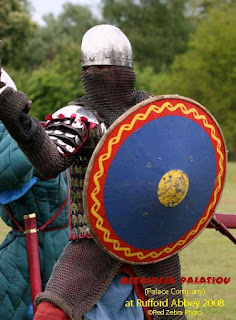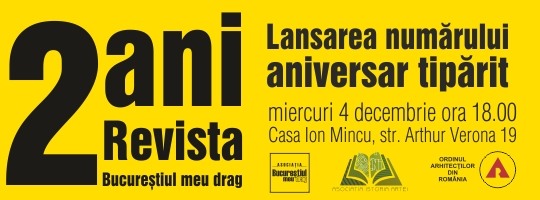| 19th century photo of an Arab warrior. The Arabs invading the Roman Empire might have looked much like this warrior. |
from the desert
In 629 AD the Roman Empire was enjoying a much deserved period of peace. No one in Constantinople had any idea that a fresh invasion from the southern deserts would happen in a matter of months.
For 26 years the Roman and Persian Empires had been in the death grip war of all death grip wars. The 700 years of war between the empires came down to this one life and death conflict. Only one empire would survive the encounter.
The Roman Empire nearly ceased to exist. The Persians conquered massive territories in the east, south and in Africa. Meanwhile the Avars and Slavs overran the Balkans and with the help of the Persians laid siege to Constantinople itself in 626.
Things were so bad that the Emperor Heracilus considered abandoning Constantinople and moving the capital to Carthage in Africa. The Patriarch Sergius convinced the Emperor to stay and put the wealth of the church at the service of the state to finance the wars.
 |
| Roman Emperor Heraclius Crowned Caesar in 610. Latin was still the official language of the military and government. The Emperor faced invasions by Persians, Avars and Muslim Arabs. |
With financing from the church, Emperor Heracilus raised additional armies and hired Khazar Turk allies to invade Persia with him.
By 628 the Persian Empire had been totally crushed, Shah Khosrow II was murdered by his own son and the Persian armies were withdrawn from Egypt, Syria and other Roman provinces.
There may have finally been "peace" between Rome and Persia, but it was a disastrous peace. The Persians sank into dynastic anarchy while the Romans were financially, militarily and politically exhausted.
The two great empires of the world were at their weakest point at just the moment a militant and militaristic Islam appeared.
Islam Appears
The 620s saw the birth of Islam deep in Arabia. General Mohammad, or prophet if you like, was simultaneously a military commander, ruler and prophet. The emotional appeal of religion was combined with terrorist methods and assassinations to clear the way for gathering territory for the faith.
As the battles of General Mohammad progressed the base of Arabia was secured for Islam and Muslim eyes started to look north to the Roman Empire for expansion.
In the year 628 Mohammad dispatched messages to the Shah of Persia, the Roman Emperor, the Governor of Egypt and the Prince of Abyssinia asking them to accept Islam.
The Shah was said to have torn up the message with contempt. Emperor Heracilus accepted his letter and simply inquired who the author was. The Governor of Egypt excused himself from changing religions, but sent as gifts a horse, a mule, a riding ass and two Egyptian girls. If the Prince of Abyssinia got the message at all there is no record of a reply.
Heracilus gave orders that he wanted to interview a traveler from the area. One Abu Sofian was brought to Jerusalem and asked about the "disturbances" in Arabia. Sofian told the Emperor that the followers of Mohammad consisted of the poorer classes and of adolescent youth. All men of substance opposed him.
The Emperor gathered intel, but did not act. The internal goings on among poor desert tribes did not require much attention.
| 19th century photo of Arab warriors |
In 629 a number of minor raids and expeditions were sent out from Arabia. Some were defeated and others returned with booty.
In September, 629 a more important expedition was organized. Tradition says the raid was to punish a chief of Rome's ally the Arab Ghassanid tribe for killing Muslim emissaries in the area. Revenge rather than conquest appears to be the motive.
A Muslim camp was formed a few miles north of Medina where volunteers were instructed to assemble. Zeid ibn Haritha, the adopted son of Mohammad, was given command. He set out with 3,000 men marching to what is today southern Jordan. It was the first Muslim raid of this size going far from Arabia.
Muslim commanders still relied on religious spirit rather than military skill and had neglected to send out spies to scout the land they were invading.
 |
| Eastern Roman Soldier |
It was not until they reached Maan that they found out there was a large force of Romans gathered to meet them. A halt was called and the Muslim leaders spent two days arguing whether to advance or retreat. The deciding voice came from an early convert who demanded "Victory or martyrdom and paradise." The order was given to advance.
The Muslim army move north with the rocky hills of Moab on their left. When they crossed the lower foothills of the mountains the Muslims suddenly found themselves in the presence of a Roman army several times larger that their own, perhaps about 10,000 men.
A majority of the Roman force appears to have been made up of Christian Arab allies of the Empire. Some proportion of the army (how much?) was reinforced by regular Roman troops, perhaps from a local garrison.
It is likely that the Roman commander was Theodore, the brother or half brother of the Emperor. Theodore had extensive experience as a Kouropalates and leading general in the Persian wars. An army this large would have required a senior office such as Theodore.
There is a small plain near the village of Mota. It was decided to give battle there.
Zeid ibn Haritha seized the white banner given to him by Mohammad. He then a wild charge of his men into Roman ranks until he fell transfixed by their spears. Another Muslim grabbed the banner from the dying Zeid, raised it aloft and cried "Paradise! Paradise!" until he was killed by a Roman soldier.
Fighting in the ranks new Muslim convert Khalid ibn al-Walid came to the rescue at this point. Perhaps a little less anxious for Paradise, he assumed control. The white banner was planted in the ground and the disorganized, battered Muslims gathered to that point. Under Khalid's leadership they retired methodically from the battlefield.
Khalid continued to engage the Romans in skirmishes, but he avoided a pitched battle. One night Khalid completely changed his troop positions. The rearguard was given new banners to give the impression that reinforcements had arrived from Medina.
On another night he had his cavalry retreat behind a hill hiding their movements. He then had the cavalry return during the day when the battle resumed raising as much dust as possible to give the impression of fresh troops arriving.
Information on the battle is minimal. Still we can read between the lines. The Arabs were mauled, but retreated in an orderly manner. On the other side, the Romans did not just call it a day and go home. They continued aggressive contact with the Muslims over several days.
Casualties are unknown, but this first contact was a solid Roman victory.
Aftermath
When the defeated Muslims approached Medina, Mohammad and the people went out to meet them. The citizens began to throw dirt on the defeated soldiers crying, "You runaways, you fled in the way of God." Mohammad said they were not runaways but could fight again for the cause.
In spite of the disaster at Mota, throughout the rest of 629 many Bedouin tribes sent deputations to Mohammad seeking friendship and alliance.
| Mohammad sent a force to the Roman province of Palaestina Salutaris to punish the Christian Arabs who killed Muslim emissaries. |
| Bedouin, Warriors 1890s |














Pentru a putea adăuga comentarii trebuie să fii membru al altmarius !
Alătură-te reţelei altmarius